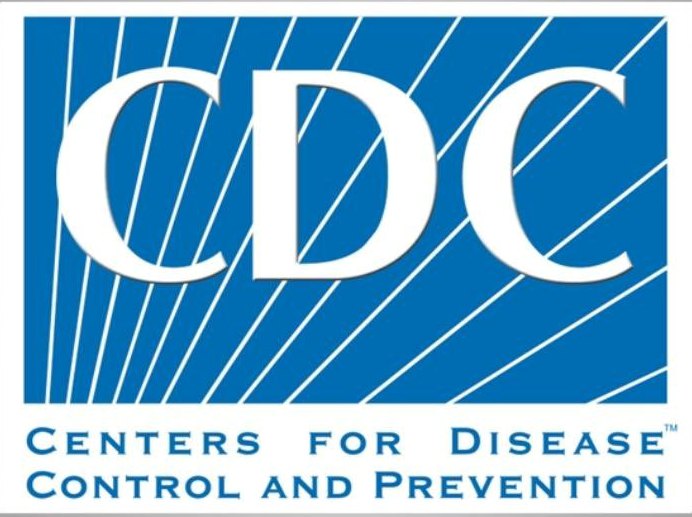There is an ongoing investigation to determine more about this outbreak. This is a rapidly evolving situation and information will be updated as it becomes available.
Referring CDC All you have to know about Coronavirus Disease (COVID-19)
How It Spreads
Person-to-person spread
The virus is thought to spread mainly from person-to-person.
- Between people who are in close contact with one another (within about 6 feet).
- Through respiratory droplets produced when an infected person coughs or sneezes.
These droplets can land in the mouths or noses of people who are nearby or possibly be inhaled into the lungs.
Can someone spread the virus without being sick?
- People are thought to be most contagious when they are most symptomatic (the sickest).
- Some spread might be possible before people show symptoms; there have been reports of this occurring with this new coronavirus, but this is not thought to be the main way the virus spreads.
Spread from contact with contaminated surfaces or objects
It may be possible that a person can get COVID-19 by touching a surface or object that has the virus on it and then touching their own mouth, nose, or possibly their eyes, but this is not thought to be the main way the virus spreads.
How easily the virus spreads
How easily a virus spreads from person-to-person can vary. Some viruses are highly contagious (spread easily), like measles, while other viruses do not spread as easily. Another factor is whether the spread is sustained, spreading continually without stopping.
The virus that causes COVID-19 seems to be spreading easily and sustainably in the community (“community spread”) in some affected geographic areas.
Community spread means people have been infected with the virus in an area, including some who are not sure how or where they became infected.
How to Protect Yourself
Older adults and people who have severe underlying chronic medical conditions like heart or lung disease or diabetes seem to be at higher risk for developing more serious complications from COVID-19 illness. Please consult with your health care provider about additional steps you may be able to take to protect yourself.
- There is currently no vaccine to prevent coronavirus disease 2019 (COVID-19).
- The best way to prevent illness is to avoid being exposed to this virus.
- The virus is thought to spread mainly from person-to-person.
- Between people who are in close contact with one another (within about 6 feet).
- Through respiratory droplets produced when an infected person coughs or sneezes.
- These droplets can land in the mouths or noses of people who are nearby or possibly be inhaled into the lungs.
Clean your hands often
- Wash your hands often with soap and water for at least 20 seconds especially after you have been in a public place, or after blowing your nose, coughing, or sneezing.
- If soap and water are not readily available, use a hand sanitizer that contains at least 60% alcohol. Cover all surfaces of your hands and rub them together until they feel dry.
- Avoid touching your eyes, nose, and mouth with unwashed hands.
Avoid close contact
- Avoid close contact with people who are sick
- Put distance between yourself and other people if COVID-19 is spreading in your community. This is especially important for people who are at higher risk of getting very sick.
Stay home if you’re sick
- Stay home if you are sick, except to get medical care. Learn what to do if you are sick.
Cover coughs and sneezes
- Cover your mouth and nose with a tissue when you cough or sneeze or use the inside of your elbow.
- Throw used tissues in the trash.
- Immediately wash your hands with soap and water for at least 20 seconds. If soap and water are not readily available, clean your hands with a hand sanitizer that contains at least 60% alcohol.
Wear a facemask if you are sick
- If you are sick: You should wear a facemask when you are around other people (e.g., sharing a room or vehicle) and before you enter a healthcare provider’s office. If you are not able to wear a facemask (for example, because it causes trouble breathing), then you should do your best to cover your coughs and sneezes, and people who are caring for you should wear a facemask if they enter your room. Learn what to do if you are sick.
- If you are NOT sick: You do not need to wear a facemask unless you are caring for someone who is sick (and they are not able to wear a facemask). Facemasks may be in short supply and they should be saved for caregivers.
Clean and disinfect
- Clean AND disinfect frequently touched surfaces daily. This includes tables, doorknobs, light switches, countertops, handles, desks, phones, keyboards, toilets, faucets, and sinks.
- If surfaces are dirty, clean them: Use detergent or soap and water prior to disinfection.
To disinfect:
Most common EPA-registered household disinfectants will work. Use disinfectants appropriate for the surface.
Options include:
- Diluting your household bleach.
To make a bleach solution, mix:- 5 tablespoons (1/3rd cup) bleach per gallon of water
OR - 4 teaspoons bleach per quart of waterFollow manufacturer’s instructions for application and proper ventilation. Check to ensure the product is not past its expiration date. Never mix household bleach with ammonia or any other cleanser. Unexpired household bleach will be effective against coronaviruses when properly diluted.
- 5 tablespoons (1/3rd cup) bleach per gallon of water
- Alcohol solutions.
Ensure solution has at least 70% alcohol. - Other common EPA-registered household disinfectants.
Products with EPA-approved emerging viral pathogens pdf icon[7 pages]external icon claims are expected to be effective against COVID-19 based on data for harder to kill viruses. Follow the manufacturer’s instructions for all cleaning and disinfection products (e.g., concentration, application method and contact time, etc.).
What To Do if You Are Sick
Call your doctor: If you think you have been exposed to COVID-19 and develop a fever and symptoms, such as cough or difficulty breathing, call your healthcare provider for medical advice.
Steps to help prevent the spread of COVID-19 if you are sick
Stay home except to get medical care
- Stay home: People who are mildly ill with COVID-19 are able to recover at home. Do not leave, except to get medical care. Do not visit public areas.
- Stay in touch with your doctor. Call before you get medical care. Be sure to get care if you feel worse or you think it is an emergency.
- Avoid public transportation: Avoid using public transportation, ride-sharing, or taxis.
Separate yourself from other people in your home, this is known as home isolation
- Stay away from others: As much as possible, you should stay in a specific “sick room” and away from other people in your home. Use a separate bathroom, if available.
- Limit contact with pets & animals: You should restrict contact with pets and other animals, just like you would around other people.
- Although there have not been reports of pets or other animals becoming sick with COVID-19, it is still recommended that people with the virus limit contact with animals until more information is known.
- When possible, have another member of your household care for your animals while you are sick with COVID-19. If you must care for your pet or be around animals while you are sick, wash your hands before and after you interact with them. See COVID-19 and Animals for more information.
Call ahead before visiting your doctor
- Call ahead: If you have a medical appointment, call your doctor’s office or emergency department, and tell them you have or may have COVID-19. This will help the office protect themselves and other patients.
Wear a facemask if you are sick
- If you are sick: You should wear a facemask when you are around other people and before you enter a healthcare provider’s office.
- If you are caring for others: If the person who is sick is not able to wear a facemask (for example, because it causes trouble breathing), then people who live in the home should stay in a different room. When caregivers enter the room of the sick person, they should wear a facemask. Visitors, other than caregivers, are not recommended.
Cover your coughs and sneezes
- Cover: Cover your mouth and nose with a tissue when you cough or sneeze.
- Dispose: Throw used tissues in a lined trash can.
- Wash hands: Immediately wash your hands with soap and water for at least 20 seconds. If soap and water are not available, clean your hands with an alcohol-based hand sanitizer that contains at least 60% alcohol.
Clean your hands often
- Wash hands: Wash your hands often with soap and water for at least 20 seconds. This is especially important after blowing your nose, coughing, or sneezing; going to the bathroom; and before eating or preparing food.
- Hand sanitizer: If soap and water are not available, use an alcohol-based hand sanitizer with at least 60% alcohol, covering all surfaces of your hands and rubbing them together until they feel dry.
- Soap and water: Soap and water are the best option, especially if hands are visibly dirty.
- Avoid touching: Avoid touching your eyes, nose, and mouth with unwashed hands.
Avoid sharing personal household items
- Do not share: Do not share dishes, drinking glasses, cups, eating utensils, towels, or bedding with other people in your home.
- Wash thoroughly after use: After using these items, wash them thoroughly with soap and water or put in the dishwasher.
Clean all “high-touch” surfaces everyday
Clean high-touch surfaces in your isolation area (“sick room” and bathroom) every day; let a caregiver clean and disinfect high-touch surfaces in other areas of the home.
- Clean and disinfect: Routinely clean high-touch surfaces in your “sick room” and bathroom. Let someone else clean and disinfect surfaces in common areas, but not your bedroom and bathroom.
- If a caregiver or other person needs to clean and disinfect a sick person’s bedroom or bathroom, they should do so on an as-needed basis. The caregiver/other person should wear a mask and wait as long as possible after the sick person has used the bathroom.
High-touch surfaces include phones, remote controls, counters, tabletops, doorknobs, bathroom fixtures, toilets, keyboards, tablets, and bedside tables.
- Clean and disinfect areas that may have blood, stool, or body fluids on them.
- Household cleaners and disinfectants: Clean the area or item with soap and water or another detergent if it is dirty. Then, use a household disinfectant.
- Be sure to follow the instructions on the label to ensure safe and effective use of the product. Many products recommend keeping the surface wet for several minutes to ensure germs are killed. Many also recommend precautions such as wearing gloves and making sure you have good ventilation during use of the product.
- Most EPA-registered household disinfectants should be effective.
Monitor your symptoms
- Seek medical attention, but call first: Seek medical care right away if your illness is worsening (for example, if you have difficulty breathing).
- Call your doctor before going in: Before going to the doctor’s office or emergency room, call ahead and tell them your symptoms. They will tell you what to do.
- Wear a facemask: If possible, put on a facemask before you enter the building. If you can’t put on a facemask, try to keep a safe distance from other people (at least 6 feet away). This will help protect the people in the office or waiting room.
- Follow care instructions from your healthcare provider and local health department: Your local health authorities will give instructions on checking your symptoms and reporting information.
Call 911 if you have a medical emergency: If you have a medical emergency and need to call 911, notify the operator that you have or think you might have, COVID-19. If possible, put on a facemask before medical help arrives.
How to discontinue home isolation
- People with COVID-19 who have stayed home (home isolated) can stop home isolation under the following conditions:
- If you will not have a test to determine if you are still contagious, you can leave home after these three things have happened:
- You have had no fever for at least 72 hours (that is three full days of no fever without the use medicine that reduces fevers)
AND- other symptoms have improved (for example, when your cough or shortness of breath have improved)
AND - at least 7 days have passed since your symptoms first appeared
- other symptoms have improved (for example, when your cough or shortness of breath have improved)
Symptoms
Call your doctor: If you think you have been exposed to COVID-19 and develop a fever and symptoms, such as cough or difficulty breathing, call your healthcare provider for medical advice.
Watch for symptoms
Reported illnesses have ranged from mild symptoms to severe illness and death for confirmed coronavirus disease 2019 (COVID-19) cases.
The following symptoms may appear 2-14 days after exposure.*
- Fever
- Cough
- Shortness of breath
Reducing Stigma
Communicators and public health officials can help counter stigma during the COVID-19 response.
- Maintain privacy and confidentiality of those seeking healthcare and those who may be part of any contact investigation.
- Quickly communicate the risk or lack of risk from associations with products, people, and places.
- Raise awareness about COVID-19 without increasing fear.
- Share accurate information about how the virus spreads.
- Speak out against negative behaviors, including negative statements on social media about groups of people, or exclusion of people who pose no risk from regular activities.
- Be cautious about the images that are shared. Make sure they do not reinforce stereotypes.
- Engage with stigmatized groups in person and through media channels including news media and social media.
- Thank healthcare workers and responders. People who have traveled to areas where the COVID-19 outbreak is happening to help have performed a valuable service to everyone by helping make sure this disease does not spread further.
- Share the need for social support for people who have returned from China or are worried about friends or relatives in the affected region.
Key Terms
- Stigma occurs when people associate a risk with a specific people, place, or thing – like a minority population group – and there is no evidence that the risk is greater in that group than in the general population. Stigmatization is especially common in disease outbreaks. (https://emergency.cdc.gov/cerc/cerccorner/article_123016.asp)
- Mental health is defined by the World Health Organization as a state of well being in which a person realizes his or her own abilities, can cope with normal stresses of life, can work productively and fruitfully, and is able to make a contribution to his or her community (https://www.who.int/news-room/fact-sheets/detail/mental-health-strengthening-our-responseexternal icon).
- Resilience is the ability to withstand and recover from stress. (https://blogs.cdc.gov/publichealthmatters/2017/08/predicting-community-resilience-and-recovery-after-a-disaster/)
Views: 144






